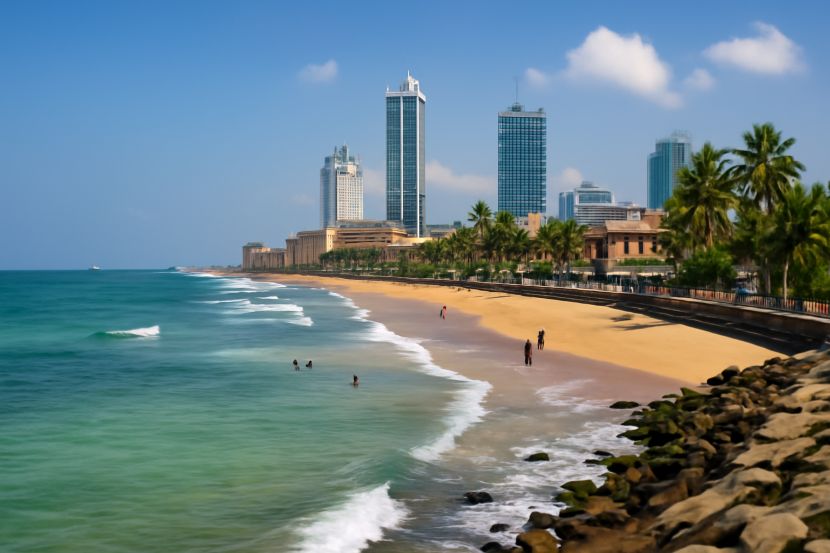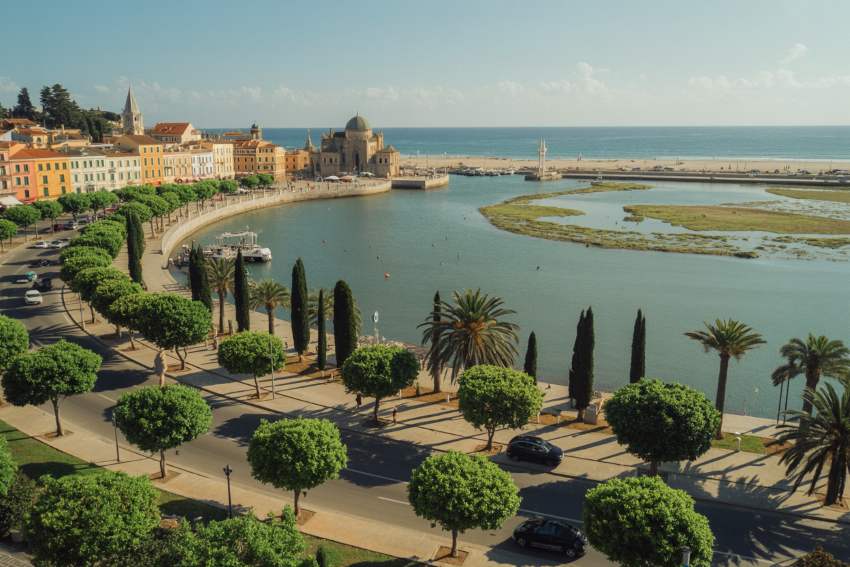New Productivity Plan To Drive Sri Lanka’s Tourism And Economic Growth – Travel And Tour World

Report on Sri Lanka’s National Productivity Master Plan (2024-2029) and its Alignment with Sustainable Development Goals
1.0 Introduction
On November 20, 2025, the Government of Sri Lanka introduced the National Productivity Master Plan, a five-year strategic framework for the period 2024-2029. The plan is designed to facilitate a significant economic transformation through productivity-driven, export-oriented growth. Developed through a collaboration between the National Productivity Secretariat, the Ministry of Industry and Entrepreneurship Development, and the Asian Productivity Organization (APO), the plan designates the tourism sector as a primary pillar for national economic revitalization and sustainable development. This report analyzes the plan’s key components with a significant emphasis on its alignment with the United Nations Sustainable Development Goals (SDGs).
2.0 Strategic Objectives and Core SDG Alignment
The Master Plan provides a pathway for economic recovery and long-term growth, focusing on innovation, human capital, and infrastructure. Its overarching goals are directly linked to several key SDGs.
- SDG 8: Decent Work and Economic Growth: The plan’s core objective is to foster sustained, inclusive, and sustainable economic growth, full and productive employment, and decent work for all. The focus on a productivity-driven, export-oriented economy is central to achieving this goal.
- SDG 9: Industry, Innovation and Infrastructure: A primary focus is placed on building resilient infrastructure, promoting inclusive and sustainable industrialization, and fostering innovation. Investment in transportation, accommodation, and digital services is prioritized.
- SDG 17: Partnerships for the Goals: The development of the plan itself, through collaboration between national government bodies and international organizations like the APO, exemplifies the multi-stakeholder partnerships required to achieve sustainable development.
3.0 Revitalization of the Tourism Sector for Sustainable Development
The tourism industry is identified as a critical driver of economic transformation. The plan outlines specific strategies to enhance its global competitiveness and resilience, contributing to multiple SDGs.
3.1 Strategic Initiatives for Tourism
- Infrastructure and Service Enhancement: Upgrading transportation, accommodation, and digital infrastructure to provide world-class services and position Sri Lanka as a leading destination. This directly supports SDG 9 by improving critical infrastructure.
- Human Capital Development: Investing in specialized training and skill development programs tailored to the tourism industry, including hospitality management and digital marketing. This aligns with SDG 4 (Quality Education) by enhancing technical and vocational skills for employment and SDG 8 by creating a skilled workforce.
- Promotion of Sustainable Tourism: Implementing and promoting sustainable tourism practices to protect cultural heritage and natural ecosystems. This initiative is crucial for achieving:
- SDG 8.9: By 2030, devise and implement policies to promote sustainable tourism that creates jobs and promotes local culture and products.
- SDG 11.4: Strengthen efforts to protect and safeguard the world’s cultural and natural heritage.
- SDG 12.b: Develop and implement tools to monitor sustainable development impacts for sustainable tourism.
4.0 Integration with Broader Economic and Development Goals
The Master Plan ensures that the growth of the tourism sector is integrated with broader national economic objectives, creating a balanced and robust economy.
4.1 Economic Diversification and Export Growth
The plan aims to increase total export revenues to USD 45 billion by 2030, with tourism being a significant contributor. Furthermore, it seeks to create synergies between tourism and other key industries such as agriculture, fisheries, and textiles. This diversification strategy enhances economic resilience and promotes inclusive growth, contributing to SDG 8 and SDG 9.
5.0 Conclusion
The National Productivity Master Plan (2024-2029) represents a comprehensive strategy for Sri Lanka’s economic resurgence. By strategically focusing on the revitalization of the tourism sector and embedding the principles of the Sustainable Development Goals, the plan aims to achieve long-term structural transformation. The emphasis on sustainable practices, infrastructure development, human capital, and multi-sectoral integration positions tourism as a catalyst for achieving a prosperous, competitive, and sustainable economic future for Sri Lanka.
Analysis of the Article in Relation to Sustainable Development Goals
1. Which SDGs are addressed or connected to the issues highlighted in the article?
-
SDG 8: Decent Work and Economic Growth
- The article’s central theme is the “National Productivity Master Plan” designed to achieve “productivity-driven, export-oriented economic growth” for Sri Lanka. It explicitly mentions that tourism contributes significantly to “employment” and the plan aims to revitalize this sector to drive the economy.
-
SDG 9: Industry, Innovation and Infrastructure
- The plan emphasizes “infrastructural development” as a key component of its strategy. It states that “Investment in tourism infrastructure, including transportation, accommodations, and digital services, is a top priority” to enhance the country’s competitiveness. The focus on “Innovation” is also mentioned as being of “supreme importance in the new economic order.”
-
SDG 12: Responsible Consumption and Production
- The article mentions that the Master Plan includes “promoting sustainable tourism practices.” This directly connects to the goal of ensuring sustainable consumption and production patterns, particularly within a key economic sector like tourism.
-
SDG 17: Partnerships for the Goals
- The article highlights that the growth plan is a “result of collaborative work done by the National Productivity Secretariat and the Ministry of Industry and Entrepreneurship Development, with technical assistance from the Asian Productivity Organization (APO).” This demonstrates a multi-stakeholder partnership between national government bodies and an international organization to achieve development goals.
2. What specific targets under those SDGs can be identified based on the article’s content?
-
Target 8.2 (under SDG 8): Achieve higher levels of economic productivity through diversification, technological upgrading and innovation…
- The “National Productivity Master Plan” is explicitly designed to achieve “productivity-driven” growth. The article mentions that the plan will foster a “diversified economy” where tourism contributes to related sectors like agriculture and fisheries, and that “Innovation” will be of “supreme importance.”
-
Target 8.9 (under SDG 8): By 2030, devise and implement policies to promote sustainable tourism that creates jobs and promotes local culture and products.
- The entire plan focuses on revitalizing the tourism industry to boost the economy and create employment. It outlines strategies like “skill development tailored to the needs of the tourism industry” and “promoting sustainable tourism practices,” which directly align with this target.
-
Target 9.1 (under SDG 9): Develop quality, reliable, sustainable and resilient infrastructure… to support economic development and human well-being.
- The article clearly states that “Investment in tourism infrastructure, including transportation, accommodations, and digital services, is a top priority” to attract tourists and support the sector’s growth.
-
Target 12.b (under SDG 12): Develop and implement tools to monitor sustainable development impacts for sustainable tourism…
- The article’s mention of “promoting sustainable tourism practices” implies an intention to manage and guide the tourism sector towards sustainability, which is the core objective of this target. The Master Plan itself can be seen as a tool to implement and guide these practices.
-
Target 17.16 (under SDG 17): Enhance the global partnership for sustainable development, complemented by multi-stakeholder partnerships…
- The development of the plan through the “collaborative work” of the National Productivity Secretariat, the Ministry of Industry and Entrepreneurship Development, and the Asian Productivity Organization (APO) is a direct example of a multi-stakeholder partnership aimed at achieving sustainable development.
3. Are there any indicators mentioned or implied in the article that can be used to measure progress towards the identified targets?
-
Indicator for Target 8.2:
- The article provides a specific quantitative goal: “drive up the country’s total export revenues, projected to reach USD 45 billion by 2030.” This serves as a direct indicator of economic productivity and export-oriented growth.
-
Indicator for Target 8.9:
- While not providing a number, the article implies that progress will be measured by the growth in “employment” within the tourism sector. It also mentions “training and development programs for local workers,” suggesting that the number of skilled workers in the industry would be a relevant metric.
-
Indicator for Target 9.1:
- The progress can be measured by the level of “Investment in tourism infrastructure” and the tangible “improvements in infrastructure, including transportation, accommodations, and digital services.”
-
Indicator for Target 12.b:
- The implementation of policies and programs for “promoting sustainable tourism practices” is an implied indicator. The number of tourism businesses adopting these practices would be a way to measure progress.
-
Indicator for Target 17.16:
- The existence of the partnership itself—the “collaborative work” between Sri Lankan government bodies and the Asian Productivity Organization (APO) to create and implement the Master Plan—serves as a clear indicator of a functioning multi-stakeholder partnership.
4. Table of SDGs, Targets, and Indicators
| SDGs | Targets | Indicators |
|---|---|---|
| SDG 8: Decent Work and Economic Growth | 8.2: Achieve higher levels of economic productivity through diversification, technological upgrading and innovation. | Total export revenues projected to reach USD 45 billion by 2030. |
| 8.9: Devise and implement policies to promote sustainable tourism that creates jobs. | Increase in employment in the tourism sector; number of workers receiving specialized training. | |
| SDG 9: Industry, Innovation and Infrastructure | 9.1: Develop quality, reliable, sustainable and resilient infrastructure to support economic development. | Level of investment in and improvement of tourism infrastructure (transportation, accommodations, digital services). |
| SDG 12: Responsible Consumption and Production | 12.b: Develop and implement tools to monitor sustainable development impacts for sustainable tourism. | Implementation of policies promoting sustainable tourism practices. |
| SDG 17: Partnerships for the Goals | 17.16: Enhance multi-stakeholder partnerships that mobilize and share knowledge, expertise, technology and financial resources. | The collaborative partnership between the National Productivity Secretariat, the Ministry of Industry, and the Asian Productivity Organization (APO). |
Source: travelandtourworld.com
What is Your Reaction?
 Like
0
Like
0
 Dislike
0
Dislike
0
 Love
0
Love
0
 Funny
0
Funny
0
 Angry
0
Angry
0
 Sad
0
Sad
0
 Wow
0
Wow
0



















































.jpg.webp?itok=0ZsAnae9#)



























